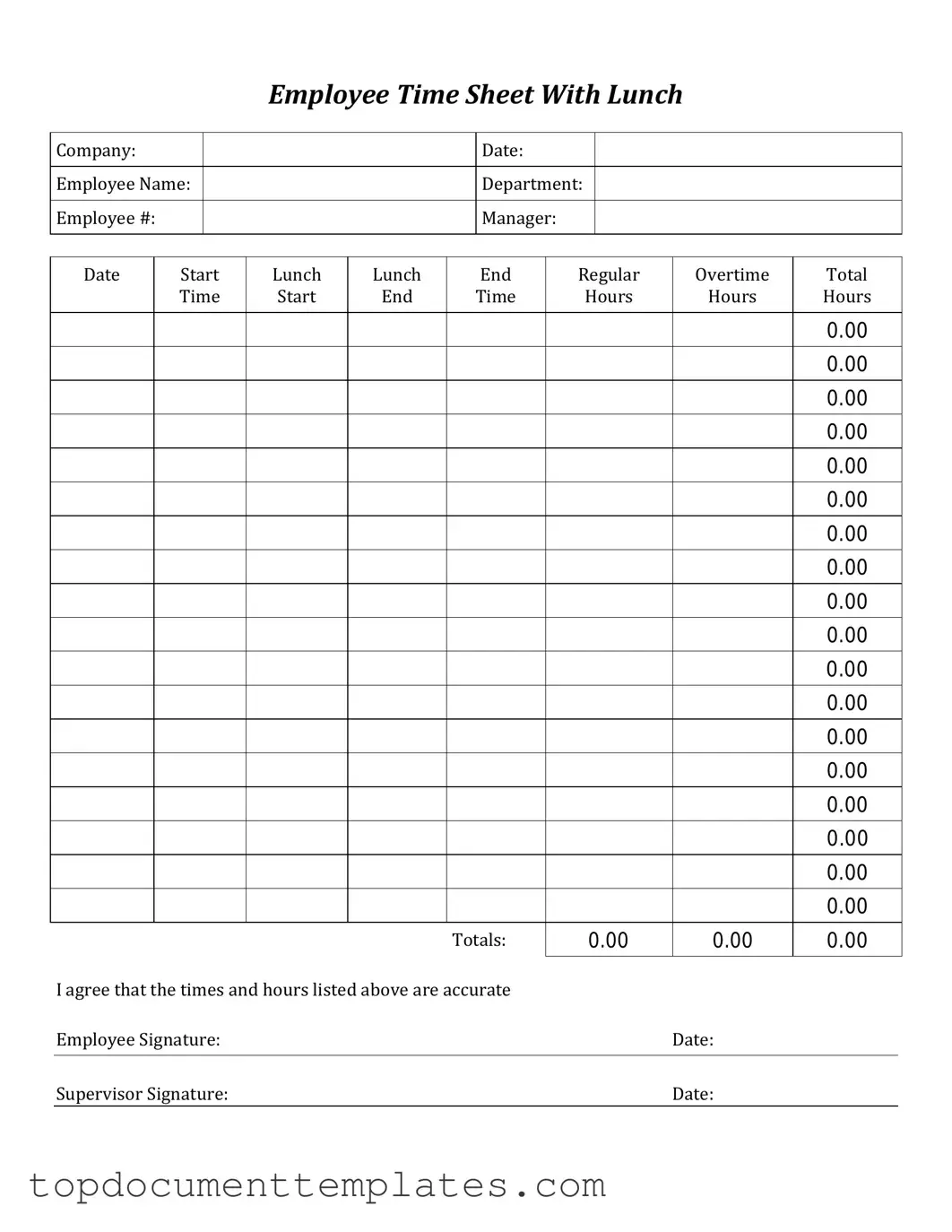The Time Card form plays a crucial role in the workplace, serving as a vital tool for tracking employee hours and ensuring accurate payroll processing. This form is designed to capture essential information, including the employee’s name, identification number, and the specific dates and hours worked. By detailing the start and end times for each workday, as well as any breaks taken, the Time Card provides a comprehensive record of attendance and productivity. Additionally, it often includes sections for overtime hours, which are critical for calculating fair compensation. Employers rely on this documentation not only for payroll accuracy but also for compliance with labor laws. A well-maintained Time Card can help prevent disputes over hours worked and ensure that employees are paid correctly for their contributions. In essence, the Time Card form is more than just a record; it is a foundational element that supports both the operational efficiency of a business and the rights of its employees.
